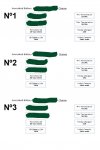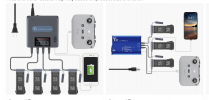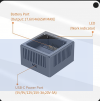Sadly, batteries have "expiration date" so no matter how well you treat them, they won't last 10 years.
There's plenty of info on how Lipos and other rechargeable batteries destroy over time, specially now that everyone has a PDA glued to their hand.
While lots of things affect, the main killing long term factor of drone intelligent batteries is the charge/dsicharge rate, as opposed to batteries used in most devices, drone batteries deliver all their charge in little time. The slower the charge rate/discharge rate, the longer the life.
While you can have some control over the discharge rates avoiding sport or days with high winds, you can have total control about the charge rate as you can decide the input power of the charger. Use a 10/20W charger to charge them overnight, and will last longer than charging at 60W on the field.
High temperature on the cells also reduces life expectancy, also over charge/deep discharge and lack of use over time. Intelligent batteries should prevent the overcharge problem, but there can be bugs like the one in the
Mini 2 charging hub, that when batteries were left inside self discharge didn't trigger.
The damage you do to the battery doesn't regenerate, once it's done it's done, so if you want the batteries to last as many cycles as possible, within a reasonable use, lowering the charge rate is one of the easiest things to control.
I sold the
Air2S with 220-250 cycles on each of the three batteries without major deviations between cells. Although I didn't treat the batteries well at the beginning, I lowered the charge rate by switching to an alternative parallel charger that charged the batteries at the same time, but at lower rate than "default".


The thing is, you only should care about this if you fly every day, but the vast majority of people use their drones just a few hours a year, so batts will die from "old age" anyway even they had little cycles.
I think we've reached the point of diminishing returns with the
Mavic 3, previous drones were meat to last little as huge improvements were still made. I knew the
Mini 2 was just a drone to practice, and the
Air2S was an in-between drone, same that I'll keep the
M3 for a long time. I may pick an FPV in the future, but I'm quite sure the
M3 will still be my camera drone in 5 years, unless it has an accident, Just like I kept my Canon 6D for 10 years before switching to the Canon R6.














